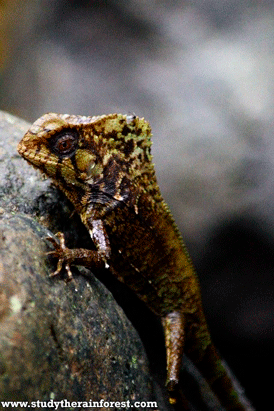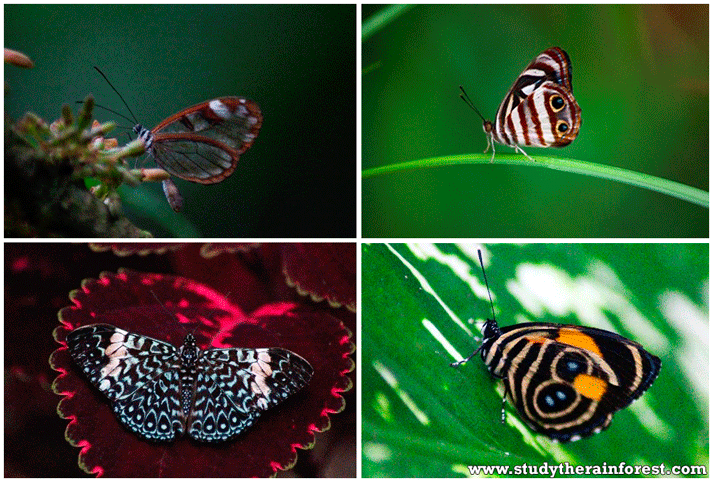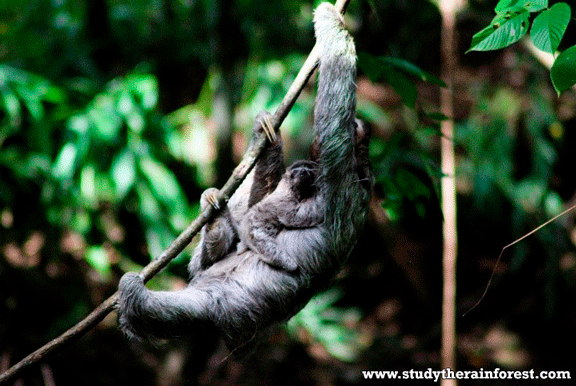Siep about his butterfly research in Costa Rica
By: Siep, The Netherlands
"From the beginning of May I did a research internship at Work with Nature in Costa Rica, here I really experienced the time of my life. Together with fellow student Max I did research on the butterfly populations in three different habitat types. And thanks to the fantastic support of the local tutors Maarten and Hanneke it has grown into a project of which I am very proud.
I think the coolest thing I've experienced during my internship was my last day in the reserve. Then, together with my internship supervisor and three other interns, I went down the river in the reserve looking for the eyelash viper, a snake that was very high on our list."
 Unfortunately we could not find this beautiful snake but we did find many species of snakes including the False fer de lance and the hog-nosed pit viper. And to top it all off, the second helmeted basilisk ever found in the reserve. After seeing all this beauty we went to a lake in the reserve where we could swim. This was really one of the most beautiful places I have ever seen and it really felt like saying goodbye to this beautiful adventure.
Unfortunately we could not find this beautiful snake but we did find many species of snakes including the False fer de lance and the hog-nosed pit viper. And to top it all off, the second helmeted basilisk ever found in the reserve. After seeing all this beauty we went to a lake in the reserve where we could swim. This was really one of the most beautiful places I have ever seen and it really felt like saying goodbye to this beautiful adventure.
My butterfly research
In the months of May until July, in the village of San Miguel, on the Caribbean site of Costa Rica, a research has been done into butterfly species. The research question was: What is the difference between the diversity of butterflies in three different habitat types? In addition, three sub questions were formed that were also answered during the research. These sub questions are related to the main question of the research. The three sub questions are: What is the diversity of butterflies in each habitat? What is the difference in numbers of butterflies? What is the difference in the number of butterfly species?
Before the research was started, three transects were realised. Each transect represented a habitat type. The three habitat types/transects were: Primary rainforest (reserve), secondary rainforest (forest trail) and a garden (the garden around the research centre). These three transects were walked once a week for four weeks. During these transects, all species of butterflies (the tadpole family is not included in this study) were caught and determined. These species, with the amount of seen species, were written down on a printed datasheet. On this datasheet also the date, starting time, end time, weather type, start temperature and end temperature were written down.
 In the beginning of the research it was expected that the highest diversity of buterfly species would be found in the reserve (primary rainforest). After four weeks of research, however, it turned out that this was not true. The highest diversity of butterfly species can be found in the garden. After this comes the reserve and then the forest trail. It was also thought that the highest biomass of butterfly species is found in the garden. After four weeks of collecting data, this conclusion turned out to be true. The garden had the highest biomass with on the second place the forest trail and at last the reserve.
In the beginning of the research it was expected that the highest diversity of buterfly species would be found in the reserve (primary rainforest). After four weeks of research, however, it turned out that this was not true. The highest diversity of butterfly species can be found in the garden. After this comes the reserve and then the forest trail. It was also thought that the highest biomass of butterfly species is found in the garden. After four weeks of collecting data, this conclusion turned out to be true. The garden had the highest biomass with on the second place the forest trail and at last the reserve.
The final conclusion on the research question ''What is the difference between the diversity of butterflies in three different habitat types?'' was that the garden has a significantly higher diversity of butterfly species than the other habitat types. Apart from that, the garden also has the highest number of individuals per habitat type and, together with the reserve, the highest number of species per habitat type. Despite the fact that the conclusion differs from what was thought in the beginning, these results can be explained. The garden is a very open area with many flowering tree and plant species. Because of this, the garden attracts considerably more butterfly species than the other two habitat types. There is also a great diversity of these flower-bearing tree and plant species and other factors like small streams and differences in altitude present throughout the transect. Because of this there are many small niches present and therefore also a greater diversity of butterfly species.
For the following researchers who want to continue this research, it is important to collect much more data. Despite the fact that a conclusion has been drawn from the current research, the research only lasted four weeks. It is also interesting for the following researchers to use other methods to catch butterflies. Think of butterfly traps. There are also several useful and interesting follow-up studies that can be done. For example, this research did not look at the Hesperiidae family.
 This picture of a sloth with baby I would like to share with you. I took the picture when we were studying tropical plants.
This picture of a sloth with baby I would like to share with you. I took the picture when we were studying tropical plants.
We didn't get much of it because we found a sloth with a baby near the river. We ran with all the interns to the river to see this beautiful animal.
Curious about the experiences of other students? Read it here!
